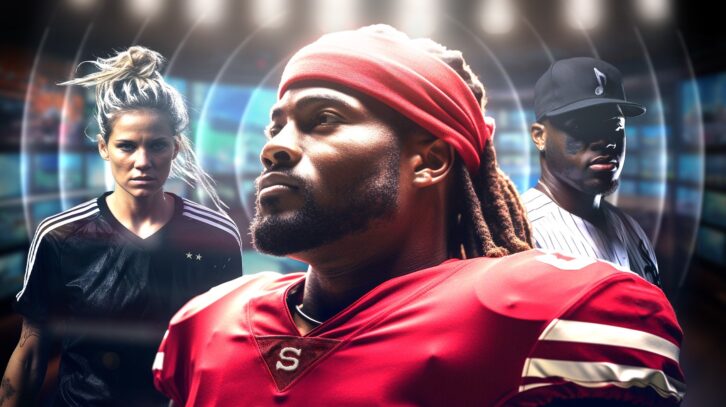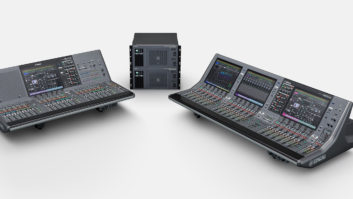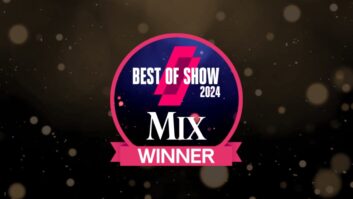 Music and sports have always had a close relationship, but television and mass media have taken this relationship to a whole new level. These days, the two are inseparable. From the in-stadium experience to the live stream, music permeates nearly every facet of sports broadcasting. Now, with regional sports broadcasting rights up in the air and several new players entering the market, music will play an even more vital role in establishing the identities of new and existing players. From music licensing to sonic identities, music for regional sports is needed now more than ever, but for whom and in what format?
Music and sports have always had a close relationship, but television and mass media have taken this relationship to a whole new level. These days, the two are inseparable. From the in-stadium experience to the live stream, music permeates nearly every facet of sports broadcasting. Now, with regional sports broadcasting rights up in the air and several new players entering the market, music will play an even more vital role in establishing the identities of new and existing players. From music licensing to sonic identities, music for regional sports is needed now more than ever, but for whom and in what format?
The Wild West
Before mass media, sports music was experienced within the confines of a stadium, affecting only those in attendance. Television changed everything. Major networks quickly recognized the economics of televised sporting events, and over time, added graphics, and especially music, to make the at-home sports experience more immersive — think, ABC’s Wide World of Sports or the iconic Olympic Fanfare & Theme. Many local TV affiliates also acquired broadcast rights for hometown teams, and developed theme songs to drive viewer loyalty — e.g. Minnesota Twins.

Cable companies seized this opportunity and expanded into regional sports networks (RSNs), bringing a lot of money to the table and further developing music and graphics for sports programming. The rise of ESPN also played a major part in driving hard-core sports viewers to switch to cable TV. This meteoric growth essentially froze local stations out of the sports business, along with the free access that viewers had become accustomed to.
Enter video streaming — which has taken a huge bite out of cable TV as viewers opt to cut the cord, and has left the sports broadcasting world scrambling to keep up. While major sporting events are still carried on large networks like ESPN, new options are emerging for viewers to watch their teams. Apple, for instance, signed a 10 year, $2.5B+ contract to broadcast MLS games, replacing the league’s contract with ESPN, Univision, and Fox. And just recently, E.W. Scripps Co., one of the largest local station groups in the U.S., created Scripps Sports division focused on local and national sports broadcasts.
For viewers, it’s hard to know where to turn, or which formats to commit to. The Washington Post recently reported that “to watch every Yankees game last year, for example, a fan in New York would have needed a cable subscription, plus subscriptions to three streaming services: Amazon Prime, Peacock and Apple TV Plus.”
If it feels like the wild west, that’s because it is. The regional sports industry is reinventing itself as we speak, and with technology and consumer preferences changing at the speed of light, it’s anyone’s game. The diversification of broadcasting rights in the industry is creating an increased demand for music.
Putting Music Into Play
In the past, stations and networks were responsible for the majority of sports broadcasts, and accordingly, the music associated with those broadcasts. These days, there are dozens of players entering the game from networks, to streaming services, to the leagues and teams themselves, and all have a decision to make about the music they use. Emerging opportunities for sports music include:
Sonic Branding — The growing number of new entrants into regional sports broadcasting means an increase in demand for unique sonic identities — custom snippets of audio played at the broadcast open and during transitions to create audible familiarity with a broadcasting entity. Picture ESPN’s Monday Night Football theme, only every broadcaster carrying NFL games will need something equally memorable to help differentiate themselves.
Music Licensing — The current changeover means that new licensing deals originally signed by RSNs will need to be struck with music houses and production agencies. In addition to sonic identities, sports broadcasts utilize a large amount of custom and production music. More players in the game means a greater need for licensed audio.
Dealing at the Source — Many leagues and teams are seeking to take over all or a portion of their own broadcasts, increasing the demand for music. In many ways, this makes a lot of sense — leagues and teams already incorporate music into branded content and in-stadium experiences, therefore, introducing broadcast music into the equation creates even further efficiencies and brand consistency.
Emotion is the Name of the Game
At the end of the day, it all comes down to compelling experiences, and live sports are made more so with the right soundtrack. No other medium evokes emotion and recall better than sound. Couple this with the drama of sports, and you’ve got a winning combination that can truly move audiences.
This is sonic branding at its best – think, CBS NCAA March Madness or the NFL on FOX themes – even those stadium anthems that get you up on your feet. All are indelible, instantly recognizable representations of their respective sports broadcast brands. However the regional sports broadcasting world shakes out, one thing is for certain, any future agreements will need to lean heavily on branded music to help drive loyalty, and finding the right music partner may just be the thing that keeps your team in the game.
Russell Boiarsky
Director/Brand Strategy
Stephen Arnold Music


